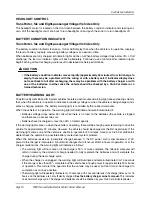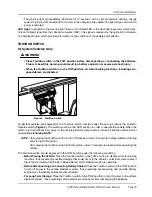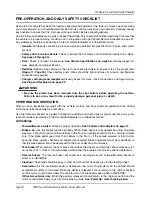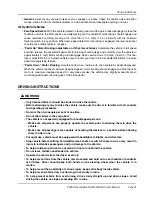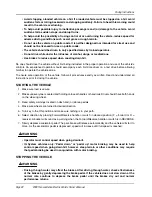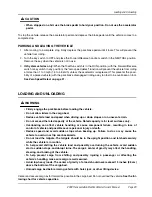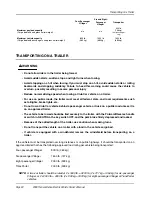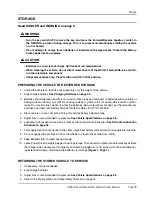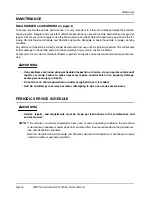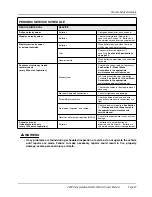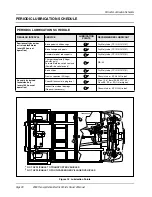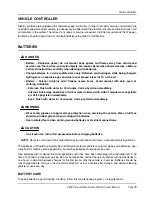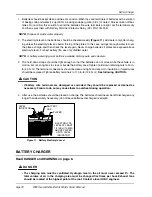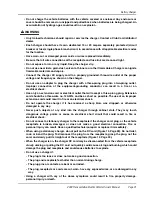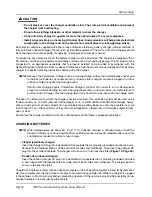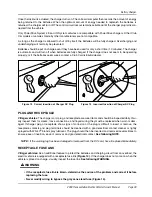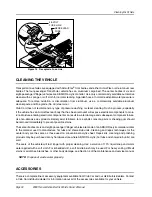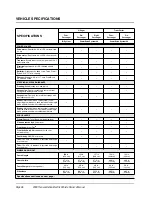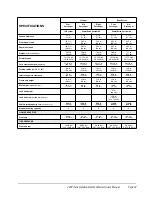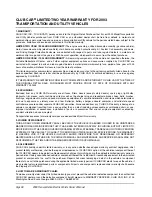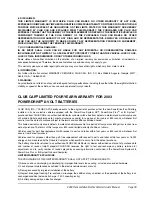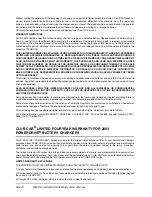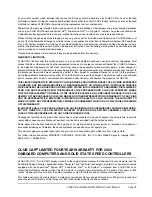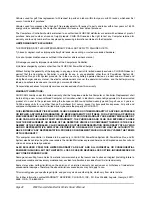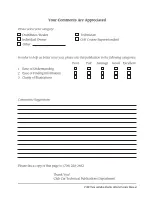
Battery Charger
Page 32
2003 Transportation Electric Vehicle Owner’s Manual
∆
CAUTION
• Do not block or cover the charger ventilation slots. The slots provide ventilation and prevent
the charger from overheating.
• Do not allow clothing, blankets, or other material to cover the charger.
• Do not allow the charger to operate for more than 30 minutes at 19 or more amperes.
• Install surge arrestors on incoming AC power lines. Surge arrestors will help protect electrical
components in the charger and on the vehicle from all but direct or close lightning strikes.
Each electric vehicle is supplied with either a fully automatic, stationary, battery charger (Villager vehicles) or
fully automatic onboard charger (TransPorter) as standard equipment. The AC cord from the charger should
be connected to a source capable of supplying 10 amperes minimum per charger.
To reduce the risk of electric shock, the battery charger must be grounded. The charger is equipped with an
AC electric cord having an equipment-grounding conductor and a grounding type plug. The AC plug must be
connected to an appropriate receptacle that is properly installed and grounded in accordance with the
National Electrical Code and all local codes and ordinances. See the owner’s manual supplied with the battery
charger for specific operating instructions before using the charger.
NOTE: Because the PowerDrive Chargers have a storage charge feature that automatically checks and
recharges the batteries as necessary every 15 days, either charger can remain plugged to a Pow-
erDrive vehicle throughout the storage period.
Shortly after charging begins, PowerDrive Chargers will shut off in order to run a self-diagnostic
program (ammeter will drop to zero). Charging will resume in a few moments (ammeter returns to
previous rate of charge). This will be repeated at one hour and at two hours into the charge cycle.
The use of an extension cord with the charger should be avoided. If an extension cord must be used, use a
three-conductor no. 12 AWG (American Wire Gauge) or no. 14 SWG (British Standard Wire Gauge), heavy-
duty cord with ground, properly wired and in good electrical condition. Keep it as short as possible (no more
than 12 feet (3.7 m)). Place all cords so they will not be stepped on, tripped over, or otherwise subject to dam-
age or stress.
Ensure that the charger ventilation slots are unobstructed and that there is adequate ventilation.
CHARGING BATTERIES
NOTE: When temperatures fall below 65 °F (18.3 °C), batteries charged in unheated areas should be
placed on charge as soon as possible after use. Batteries are warmest immediately after use, while
cold batteries require more time to fully charge.
• Villager (stationary charger)
Insert the charger AC plug into a dedicated AC receptacle that is properly grounded and wired in accor-
dance with the National Electric Code and all local codes and ordinances. Then insert the charger DC
plug into the vehicle receptacle. The charger will turn on two to ten seconds later (Figure 12, Page 33).
• TransPorter (onboard charger)
Insert the onboard charger AC plug into a dedicated AC receptacle that is properly grounded and wired
in accordance with the National Electric Code and all local codes and ordinances. The charger will turn
on two to ten seconds later.
PowerDrive Chargers interact with an onboard computer on the PowerDrive System 48 and IQ System vehi-
cle. The computer records the amount of energy consumed during vehicle use. While the charger is plugged
in the vehicle’s control circuit is locked out, preventing operation of the vehicle, as well as the possibility of sub-
sequent damage to the charger and the vehicle.
Summary of Contents for TransPorter
Page 1: ...2003 Owner s Manual Electric Vehicles Villager TransPorter...
Page 2: ......
Page 4: ...Page 2 2003 Transportation Electric Vehicle Owner s Manual...
Page 45: ...2003 Transportation Electric Vehicle Owner s Manual...
Page 46: ......
Page 47: ......

